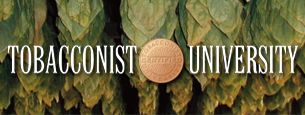In 1492 Christopher Columbus discovered the new world. During his first contact with the Taino Indians (indigenous tribes that inhabited the Caribbean islands), he noticed, as he described on his navigational diary #85, transcribed by Spanish historian Bartolome de las Casas, to have seen these indigenous with a “tizon” (Like a branding iron) in their hands, made of dry leaves (buncher), and wrapped in other dry leaves (Wrapper) in the shape of a musket, lit on one end, and sucking from the other end, inhaling the smoke. This object, wrote Columbus, we will name the same as the Taino called them, “Tabaco”. These leaves were given to Columbus as valuable gifts, among others, like gold, spices, exotic fruit, etc., on his return trip, to be presented to the Queen of Spain as proof that he had discovered the new world. It wasn’t until their later voyages that Spaniards discovered that the Taino Indians smoked for pleasure, but most importantly, for religious purposes. The tobacco had a powerful spiritual meaning, and through a ceremony called “The Rite of Cohoba” (The Rite of Tobacco), it played a major roll on the social and economic structure of the aboriginal Taino tribes.
DESCRIPTION OF THE RITE OF COHOBA
The Rite of Tobacco was a powerful, spiritual, sacred, and religious ceremony among all the Taino tribes. The BEHIKE (witch doctor) would sit on his DUJO (ancestral ceremonial seat or throne) to inhale COHIBA/COHOBA. He would smoke and inhale TOBACCO to induce a trance to achieve communication with their ancestors that resided in COABEY (Paradise) to plead for health, protection, to assign which members of the tribes would be hunting, harvesting, and even to consult about matrimonial unions, to make sure that everything was done with the approval of the ancestors. During their ritual, they used CUEY (sacred objects or semis carved out of stone or sacred wood). It has been speculated that Taino used the bioluminicence ink of the CUCUBANO (Taino indian word for a click beetle-Pyrophorus Luminosus) to paint their bodies to glow under the moon light during their religious rituals, performed mostly at night.
NOTE FROM THE AUTHOR
Over the years, I have dedicated a big part of my time, visiting and sharing experiences in numerous cigar lounges around the U.S. I have noticed elements that repeat themselves, like a pattern, that are unbelievably common. Cigar lounges are frequented by a multitude of people of different backgrounds, who share their time in the same room, enjoying a cigar. These people come from different cultural, economic, religious, and educational levels. I have seen a successful lawyer, a handyman, a brain surgeon, a pizza delivery guy, a retired FBI agent, and a school teacher (quite diverse, right?) and no matter what the topic of conversation is they are always determined, far from arguing, to finding common ground between the different points of view on the subject of discussion. Always sitting back, having fun, and most importantly, relaxing. It is interesting, but I have never seen anyone smoking a cigar under stress. This general, but very common bond, among cigar smokers sharing the pleasure of smoking a premium cigar, always and inevitably reminds me of the origin and the reasons why the aboriginal Tainos saw the tobacco as the ideal element for reflection, spirituality, and peace. In conclusion, there are a few words from the Taino indian dictionary connected to the Rite of
Tobacco:
TABACO (Tobacco)
COHIBA (Cohoba)
BEHIKE (witch doctor)
DUJO (ceremonial seat or throne)
COABEY (paradise)
CUEY (sacred object)
CUCUBANO (click beetle)
Author: Eloy at Southern Classic Cigars
Images By: Jose Martinez











No comments :
Post a Comment